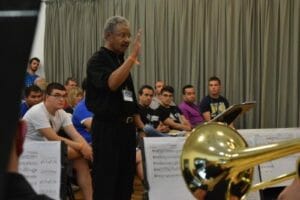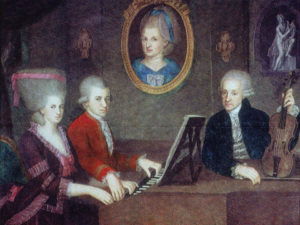
Guiding Principles for Agreements
It was the spring of 1975 when Paul Katz, cellist of the Cleveland Quartet, sat down to work out the details of the Quartet’s appointment as members of the faculty of the Eastman School of Music, whose director I was at the time. We both understood at the outset that the members of the quartet would appreciate the economic base of faculty tenure and that any university would shy away from a situation in which one or more members of a quartet were no longer able or willing to perform at a high level, thus necessitating continuing salaries to a quartet of five (or more!) tenured members. More than one Midwestern university had recently suffered the budgetary strain of a tenured string quartet with five (or six!) salaries.
After an afternoon’s discussion, Paul and I came to a compromise based on three rules that not only made the Cleveland Quartet a highly valued part of the Eastman faculty for the following two decades but also facilitated the appointment of several dozen string quartets to the faculties of many American colleges and universities. The three rules were as follows:
1. Equal Treatment of Ensemble Members
All four members of the ensemble would serve with the same rank, salary, and teaching load.
2. Group Tenure
The quartet would not be tenured as individuals but as parts of an ensemble. Thus, were one member of the quartet unable or unwilling to continue as a member of the ensemble, he or she would leave the faculty, unless a vacant slot happened to be open at the time. This is exactly what happened several years later when Martha Katz, founding violist of the Cleveland Quartet, decided she wanted to become a mother. The procedure is an expensive one as a search for the sponsoring school must pay the expenses of the candidates, each of whom must remain for a week or ten days of rehearsal and performance with his or her potential colleagues. During the 20-year period when the Cleveland Quartet served as members of the Eastman faculty, this arrangement made it possible for us to replace Atar Arad, who had succeeded Martha Katz, with James Dunham.
3. When Two Members Leave, Give the University a Say
Should two members of the quartet leave at about the same time, it would be up to the administration of the School to decide whether we still had a quartet. Thus, when William Preucil decided in the spring 1994 to accept the concertmaster’s chair of the Cleveland Orchestra and Paul Katz, afflicted with a bad back, decided he no longer had the stamina to break in a new first violinist, I came to the painful conclusion that we no longer had a quartet. Accordingly, I informed the two surviving members of the quartet that they would have but a single year of additional employment at Eastman, while we proceeded with a search for a new quartet.
A Quartet for the Present Day
Our search produced the Ying Quartet, a splendid young group of Eastman graduates comprised of three brothers and a sister. They had been working as a group for several years, studying, rehearsing, practicing, and winning international prizes. They had had the additional experience of two years as the resident quartet for Jesup, a town of 2000 Iowan corn and hog farmers where the Yings had had their mornings free for rehearsing with their afternoons and evenings taken by the local schools and churches, and by playing after dinner for soirees of their Jesup hosts.
Their modest salaries were split by the local school system and by the National Endowment for the Arts. Their local hosts were overjoyed when the Yings appeared for 25 minutes on Charles Kuralt’s CBS Sunday Morning, standing at the outset next to a roadside billboard welcoming visitors to Jesup, bragging that the town had its own Protestant church, its own Catholic church, and its own string quartet.
Later, Congressman Sid Yates invited the Yings to testify on Capitol Hill on the future of the NEA. They were accompanied to Washington, each at his own expense, by a dozen farmers from Jesup who said that their town had been immeasurably enriched by playing and listening to string quartets instead of focusing after dinner as before on watching TV, drinking beer, and fornicating.
The Ying Quartet was appointed partly for their superb artistry as a young quartet, partly for their Jesup experience in the development of new audiences for music, and partly because, as a family quartet, it was vital for them to get along together on a continuing basis.
When they addressed an audience of MBA candidates at the McCombs School of Business at the University of Texas at Austin, I watched with pride while they discussed how they came to musical conclusions for tomorrow night’s concert in a situation where two of them wanted to go slower and the other two faster. “In case of emergencies we have a rule which mandates that one of us is ultimately in charge of each piece on the program. As a result, we think it’s a good idea that the distribution of such assignments be changed each season.”
How Chamber Ensemble Musicians Can Help Universities
In days of budget pressures for orchestras and universities, it is important for young chamber musicians to understand what they can do for the universities they serve.
1. Recruit
Help recruit music students of real excellence from all over the world.
2. Choose the Right Name
Act with great care about the initial choice of a name for their ensemble. The President of the University of Rochester, to whom I reported, hated the idea that a faculty quartet at Eastman should be called the Cleveland Quartet. I remember refereeing a heated lunch of his with Paul Katz when the president said that the only name worse for an Eastman quartet would be the Syracuse Quartet. Concord, Italiano, Miró, and Guarneri are all, in the long run, superior names for string quartets.
3. Proudly Associate with the University
See to it that all recordings and out-of-town programs make it clear that the Quartet teaches at the host institution.
4. Reach the Alumni
See to it that relevant public relations wings of the university know well in advance of the touring schedule, thus making it possible for university alumni/ae in San Francisco or Berlin to know ahead of time when performances of their favorite quartet are to take place at times the university knows about well in advance.
5. Fulfill Responsibilities as Teachers
See to it that all students receive their lessons as scheduled and with the proper dedication. Though originally each member of the Cleveland Quartet was to teach five private students while coaching five chamber groups, it was quickly discovered that ten private students were a lot easier, involving as it did a lot less administrative work spent on rescheduling inevitably missed appointments.
When it came in 2002 to appointing a quartet for the University of Texas at Austin, the same principles were followed in the appointment of the Miró Quartet.
Help Ensemble Members Develop Their Ears
The proliferation of string quartets all over America makes clear to music schools the importance of developing young musicians who are not only excellent performers but also excellent teachers of how to listen, a skill that is central to the work of MITA.




2 Responses
Thanks, Bob, for this helpful blog. Another model I’ve utilized at DePauw University, where we didn’t have the resources to create new tenure lines, was to align our presentation series with our residency/masterclass schedule and budget. For example, we invited the Imani Quintet last year to perform in our 3,000 seat hall (which draws the local community in addition to the university community) but in the same contract also invited members of the Quintet to come to DePauw in the fall semester and in the spring semester to lead residencies on campus–working in classroom environments, with chamber music groups, holding instrument-specific masterclasses, and collaborating on community-based projects. We repeated that model this year with ICE (Claire Chase’s International Contemporary Ensemble). This model allows our faculty and students to work with different members of the ensemble, not necessarily the entire ensemble, over the course of the two residency periods–saving a bit of money but also letting us get to know the ensemble members individually and giving them the chance to create educational opportunities that speak to their individual strength and interests. I find this structure works particularly well with contemporary chamber groups that might fluctuate in size and instrumentation such as ICE, or Alarm Will Sound, vs. traditional ensembles such as string quartets.
I very much appreciate Bob sharing these insights, guidelines, and best practices for how institutions can foster effective relationships with chamber ensembles. He should take great pride in having developed these principles and in establishing three such successful and long term residencies for the Cleveland, Ying, and Miró Quartets.
I have the pleasure of managing eleven prominent string quartets – seven of which have full-time faculty residencies at leading American universities and music schools. It can’t be understated how important these positions are for each ensemble. It’s a regular and significant source of income, while also giving the ensemble a home base where they can raise families and continue maturing as an ensemble. The institution’s name and reputation also gives them an effective calling card around the world. In turn, the institutions benefit from the ensemble serving as an active national and global ambassador to help recruit top students, cultivate alumni/donors, and promote the music of faculty composers. Also, uniquely with a full-time faculty appointment, the ensemble is able to act as a regular and permanent link between the institution and the music industry. They are able to share up-to-date, practical performance experience with students, and have the connections to help usher the institution’s most promising students into successful performance careers.
In recent years, a number of schools have developed or moved to shorter-term residency programs with single or multiple ensembles visiting campus occasionally for a series of week-long visits over a limited period (rather than one that is open ended). There is no question that it can be a wonderful experience for students to have the chance to benefit from multiple perspectives, and there are obvious financial benefits for the institution with this approach. However, I do think that there are unique advantages for having a single ensemble serve as full members of a faculty, and I hope that more schools will continue the push to raise funds and create the capacity for these kind of positions.
If this trend continues though, it will require significant changes in how chamber ensembles organize themselves in order for them to be able to sustain long term careers. Ensembles will need to develop the skills to establish concert series in their own communities, raise funds to commission new music, acquire rehearsal and teaching space, arrange for their own health insurance, open their own retirement plans, etc.
Of course, there are many musicians and even a few ensembles (the Kronos Quartet comes to mind most readily) that are already adept at operating this way. However, most of the top chamber ensembles have – up until now – been able to rely on academic institutions for this kind of support. Looking forward, in addition to continuing to advocate for the value of long-term ensemble positions, I think it would be wise to look to these colleagues for inspiration and to think about new business models that will allow chamber ensembles to continue to thrive.